International travel makes you realize that there are significant differences from place to place: foods, language, culture, and drastic variations in landscape and flora and fauna. This is to be expected as the world is a pretty big place, and as topography and climates shift so does pretty much everything else.
But one thing that doesn’t change as you travel in the same hemisphere (and only travel east/west) is the night sky. Thanks to the fact that the world spins on an almost perfect north-south axis, the night sky looks the same whether you are in Seattle or Singapore, New York or Nuremburg, Buenos Aires or Brisbane. It won’t however look the same if you travel from New York to Buenos Aires as they are on opposite sides of the globe in different hemispheres.
This is a unifying factor, a singular shared experience that crosses borders easier than the wind. While light pollution limits many people’s experience of the night sky, it is still there; we just need to turn off our lights and look up.
This might be why depictions of the night sky can have so much emotional impact – so many billions of other humans see it too. When I travel, I often find myself looking up at night to see the same moon, the same planets, and the same stars that I would see at home.
That knowledge makes traveling so much more personal, allowing you to connect with others in a foreign land where you may feel like an alien. But you aren’t: you are just a human wandering around this big old ball of rock, looking up and hopefully feeling some wonder about it all.
That wonder is an important part of my life, and I often feel it with a whole variety of things, not the least of which is incredible timepieces.
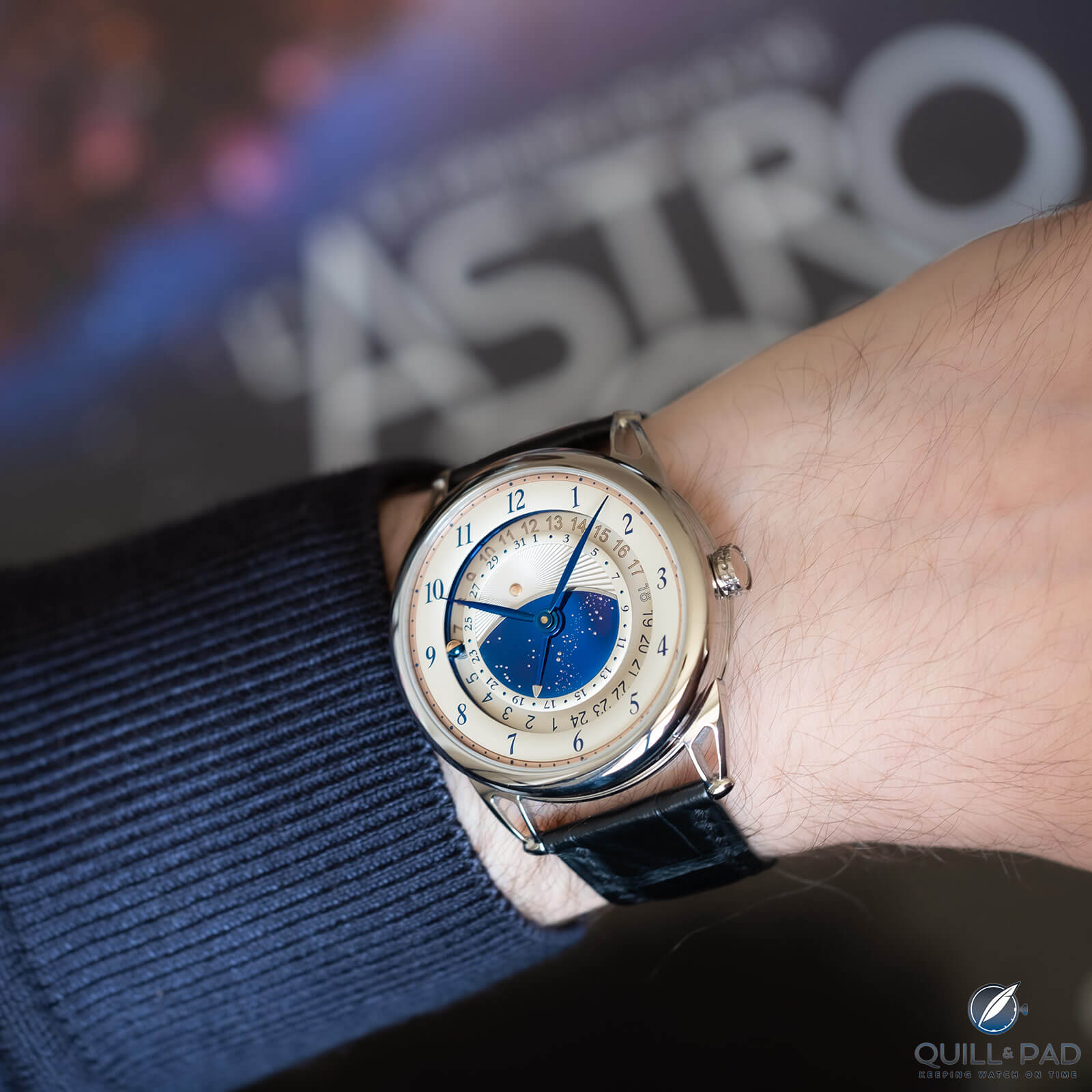
De Bethune DB25 GMT Starry Varius on the wrist
Combining watchmaking, travel, and the night sky is a terrific trifecta, and the brilliant minds at De Bethune have done just that with the latest release: the DB25 GMT Starry Varius is an incredible synthesis of what makes the brand so great at what it does and the things that make me feel alive. It also harkens back to the DB25 World Traveller in a more poetic way.
De Bethune DB25 GMT Starry Varius
At its core, the GMT Starry Varius is very similar to the World Traveller, though gently modified with the romantic in mind. The entire purpose of the GMT Starry Varius is to maintain its function as a multiple time zone watch without the focus on the time zones. Lack of indication for more than two time zones immediately removes the single-minded focus of the World Traveller, which was more oriented toward the business traveler.
The GMT Starry Varius is designed for the world wanderer because its dial focuses on a view of the heavens (like no other brand can do) and relocates the calendar function to make it more prominent. The GMT Starry Varius reinforces the impermanence of time.

De Bethune DB25 GMT Starry Varius
The Starry Varius displays local time (or the second time zone) in typical De Bethune style with perfectly blued hands and a gently domed outer ring, immediately followed by a recessed track just like the World Traveller.
This track displays home time hours separated into daylight and nighttime, indicated via a “micro sphere” that slowly travels the track over the entirety of the day. The micro sphere rotates 180 degrees on an axis parallel to the dial over the hours of 6:00 and 18:00 (6:00 pm) to show the switch between night and day.
The inner dial, rich with color and texture, no longer highlights international cities but the glorious Milky Way and constellations of the night sky.
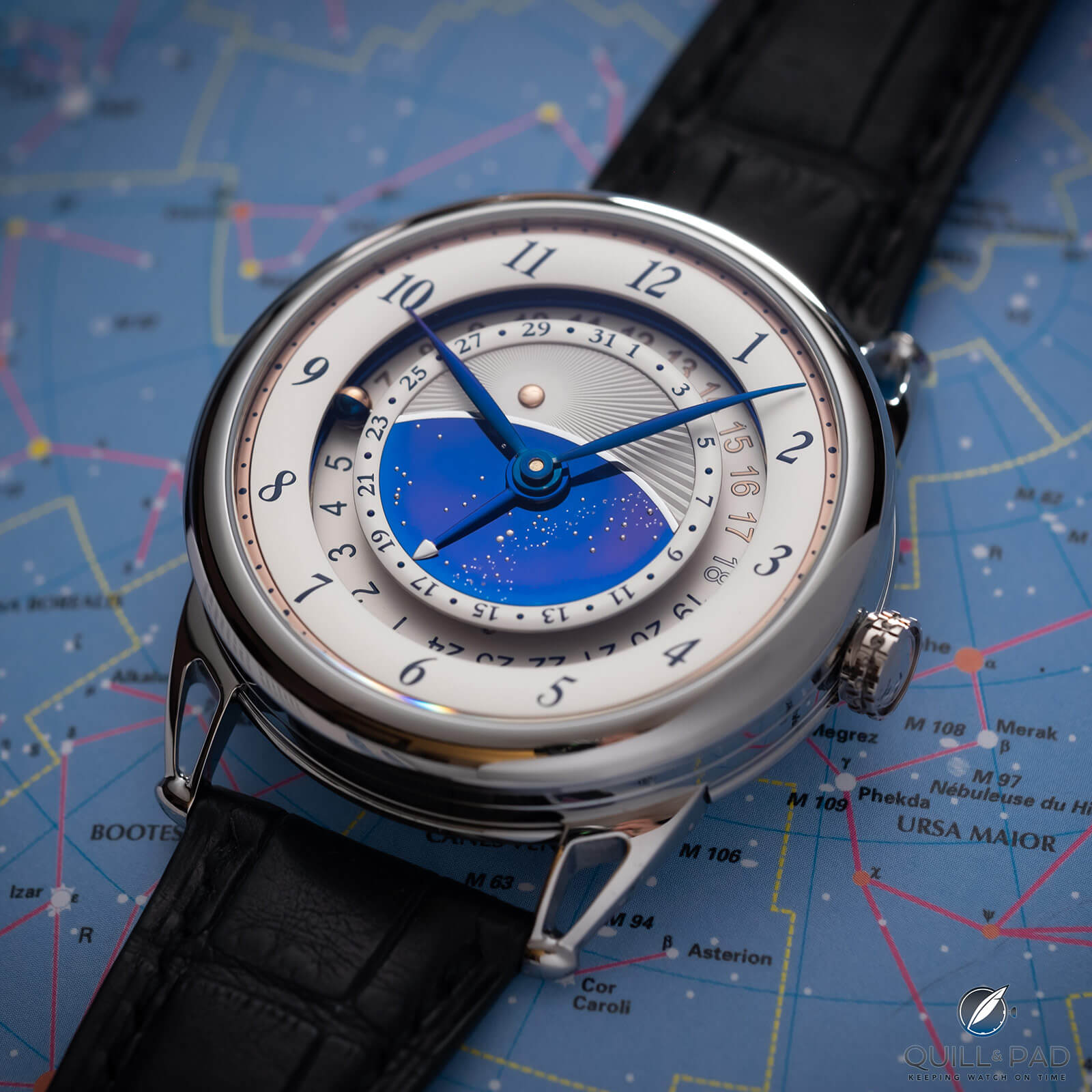
De Bethune DB25 GMT Starry Varius
A microlight-finished section includes a prominent golden sun that is encircled by a small domed ring upon which the date is displayed, indicated by a third blued hand with a polished pointer.
While more traditional than the date indication on the DB25 World Traveller (it has a ring around the dial’s outer perimeter with pointer driven from a small slit between the dial rings), the DB25 GMT Starry Varius’s date is more central and obvious – which is all part of the evolution.
De Bethune DB25 GMT Starry Varius: world meets sky
Aesthetic considerations are always strong with De Bethune, and the choices here represent a shift in mindset. The original design of the World Traveller was busier and a little bit more crowded, lacking the emotional impact that the GMT Starry Varius brings to the table. This change starts at the center with everyone’s favorite De Bethune artistic craft: a miniature representation of stars in our galaxy in perfectly polished and blued concave titanium.
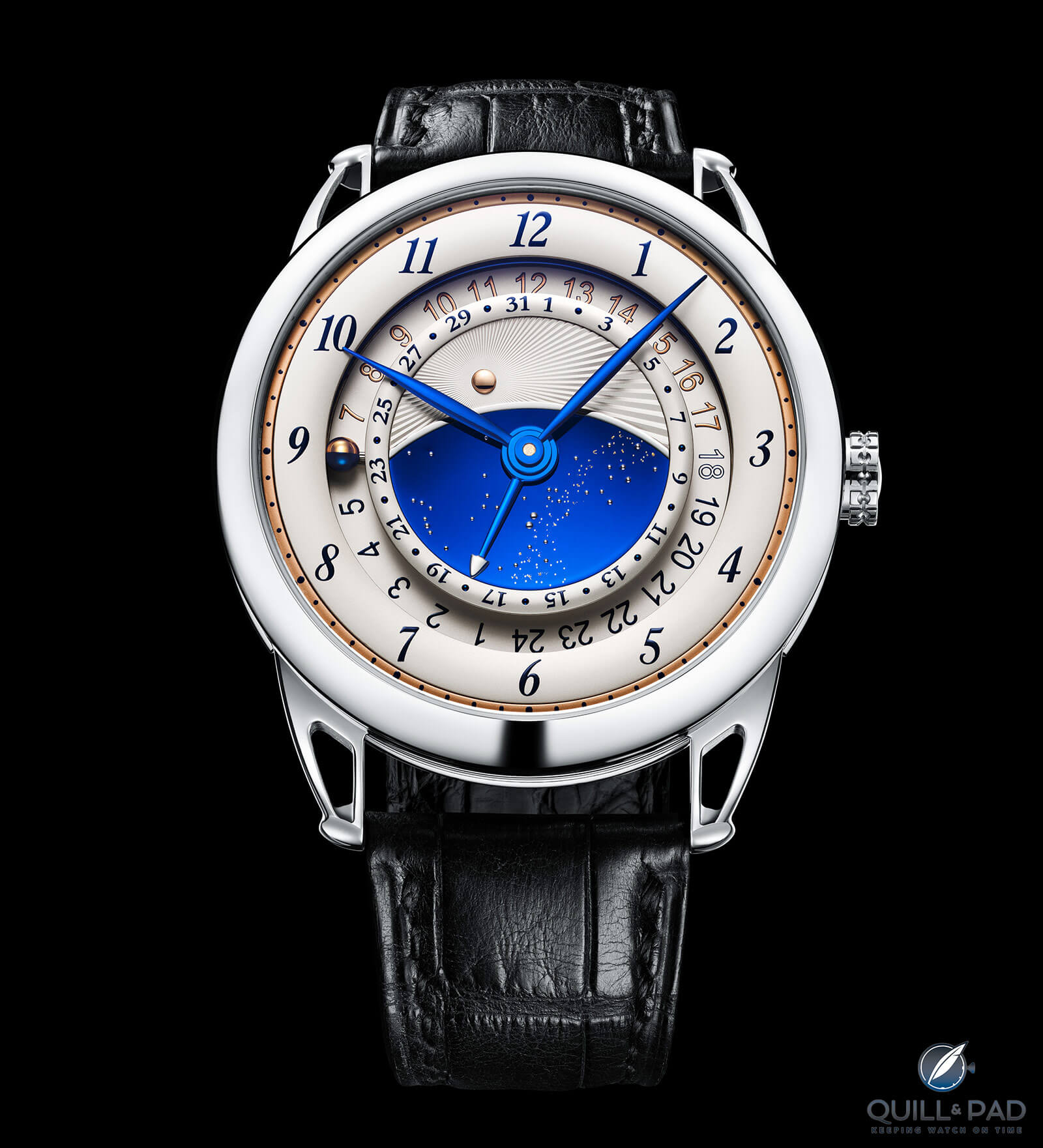
De Bethune DB25 GMT Starry Varius
The expanse is filled with a variety of techniques to mimic the majesty of the cosmos, starting with delicate, polished white gold pins set into the titanium dial.
A series of smaller “stars” are created using a micro-sized laser to etch tiny dots across the blued titanium. Finally, the dust and nebulae giving the Milky Way its texture is applied using tiny amounts of 24-karat gold leaf.
All of this comes together to create an absolutely stunning night sky scene; this combination of techniques has been a perennial favorite of mine ever since it first debuted on the DB25 Moon Phase Starry Sky in 2012 (the earliest version of it appeared in 2005 on the DBL, later reappearing on the 2010 DB25 Moon Phase Starry Sky but hadn’t reached its final perfected form yet).
The sky is gracefully topped by microlight finish arching across the upper third of the dial center to give more room to the night sky. Still, the golden sun and rays emanating from it create a nice, juxtaposed bit of visual motion to keep the eye exploring the dial. The date ring offers pad-printed odd-numbered numerals in blue matching the dial and hands, while the even-numbered days are represented by polished, blued micro spheres inserted into the ring.
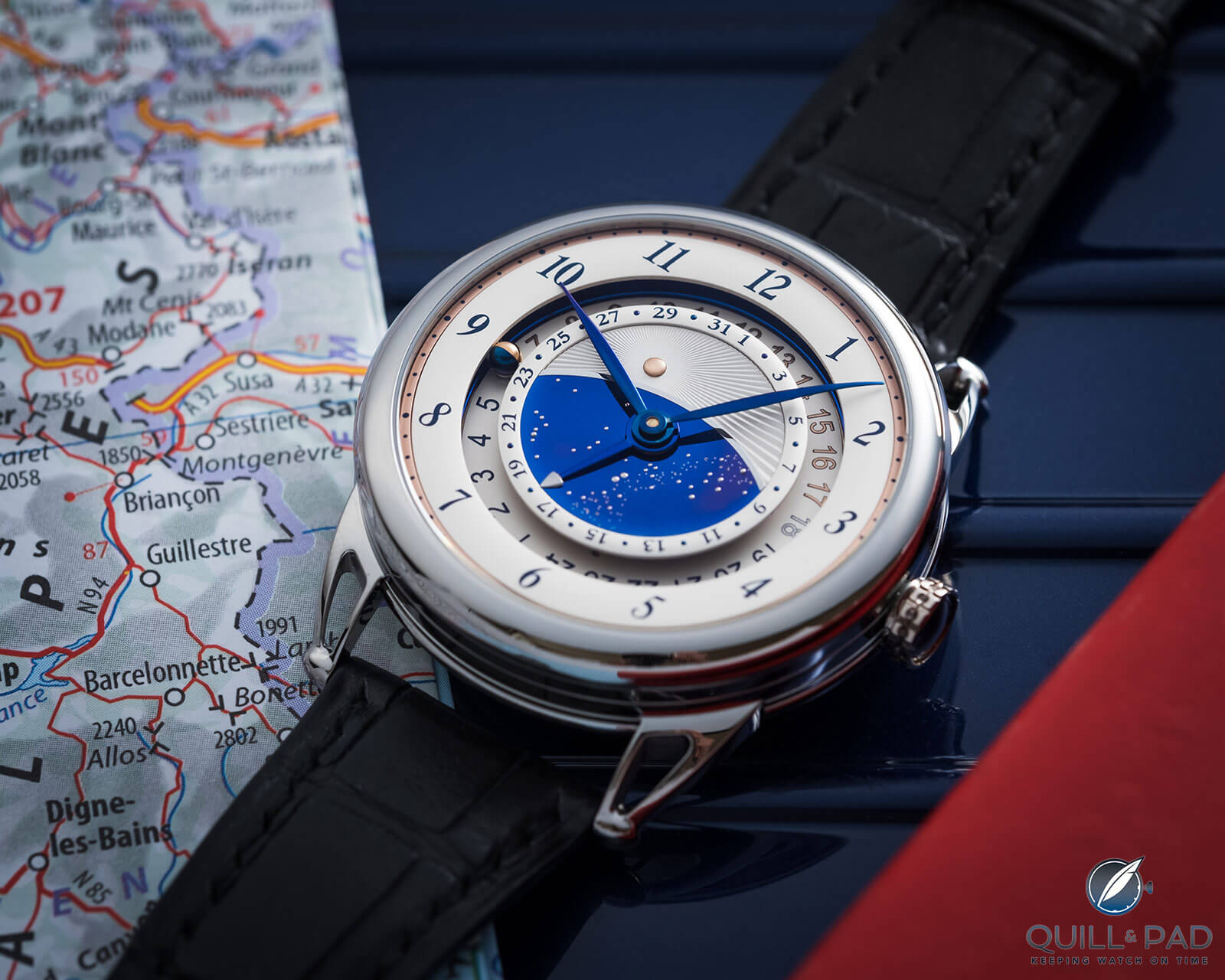
De Bethune DB25 GMT Starry Varius
The blue aesthetic continues into the recessed track with the numerals 19 through 5 sporting the same blue pad printing, while 6 and 18 have the same blue as an outline of the number. These denote the nighttime hours and the change from night into day (or vice versa). Numbers 7 through 17 have the same blue outline but this time filled with a pad-printed gold to match the golden sun on the upper half of the center dial.
De Bethune DB25 GMT Starry Varius: continuation on theme
This visual shift is accompanied by the same change on the hour indicator micro sphere. The sphere, just like the typical De Bethune moon phase, has two hemispheres to highlight day or night with (you guessed it) a polished, blued side or a polished gold side. The gold side follows the daylight hours, while the blued side follows the nighttime hours to more visually define the day/night indication.
The mixture of blue and gold is continued on the local time hour ring and its very minimal minute ring just inside the bezel.
This all offers clear evidence that aesthetic considerations are indeed strong at De Bethune, and the best models stay true to the theme.
The DB25 GMT Starry Varius is designed for a different type of traveler than its mechanical antecedent, the World Traveller, and with that central depiction of the Milky Way it succeeds in inspiring wonder in lieu of promoting “global” efficiency. The romantic in me always prefers stopping to gaze at the night sky, which is why this iteration appeals to me more.
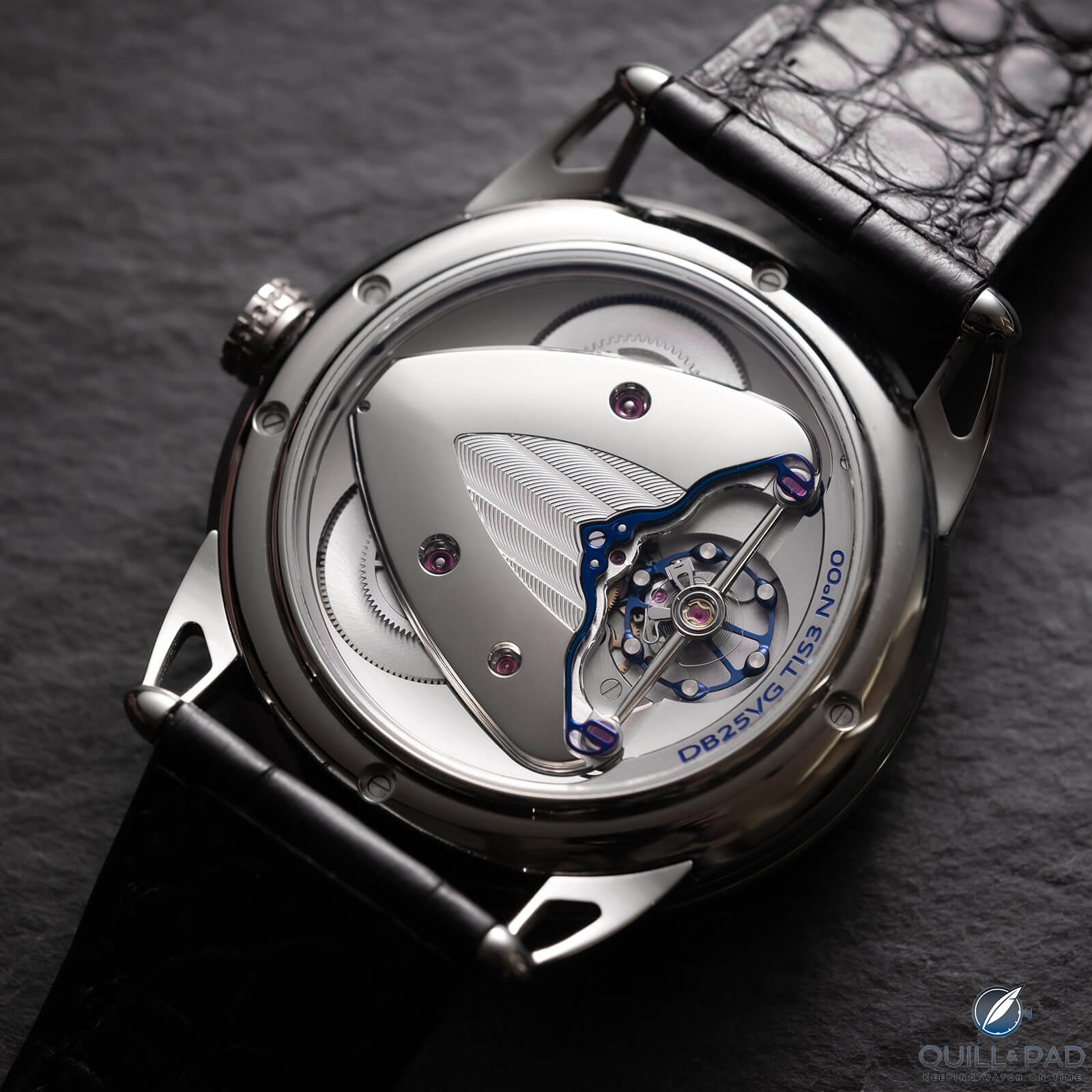
Beautiful movement visible on the back of the De Bethune DB25 GMT Starry Varius
I also like to gaze at De Bethune mechanical artistry, which is visible on Caliber DB2507 when you flip the GMT Starry Varius over, exquisitely finished and almost perfectly symmetrical.

De Bethune DB25 GMT Starry Varius: triple pare-chute regulator with silicon balance wheel
Visible are the highlights of De Bethune engineering: the triple pare-chute system supporting the aerodynamic titanium balance, the hairspring with De Bethune’s flat terminal curve, and a silicon escape wheel peeking out from under the massive polished bridge spanning the entire movement.
Front to back, the GMT Starry Varius presents a vision of wonder that makes for a perfect travel companion, at least for my type of travel. Having this on my wrist as I stand under the open sky in some corner of the world would encapsulate so much about what excites my soul, and I feel like De Bethune truly considers these types of ideas when designing pieces like this.
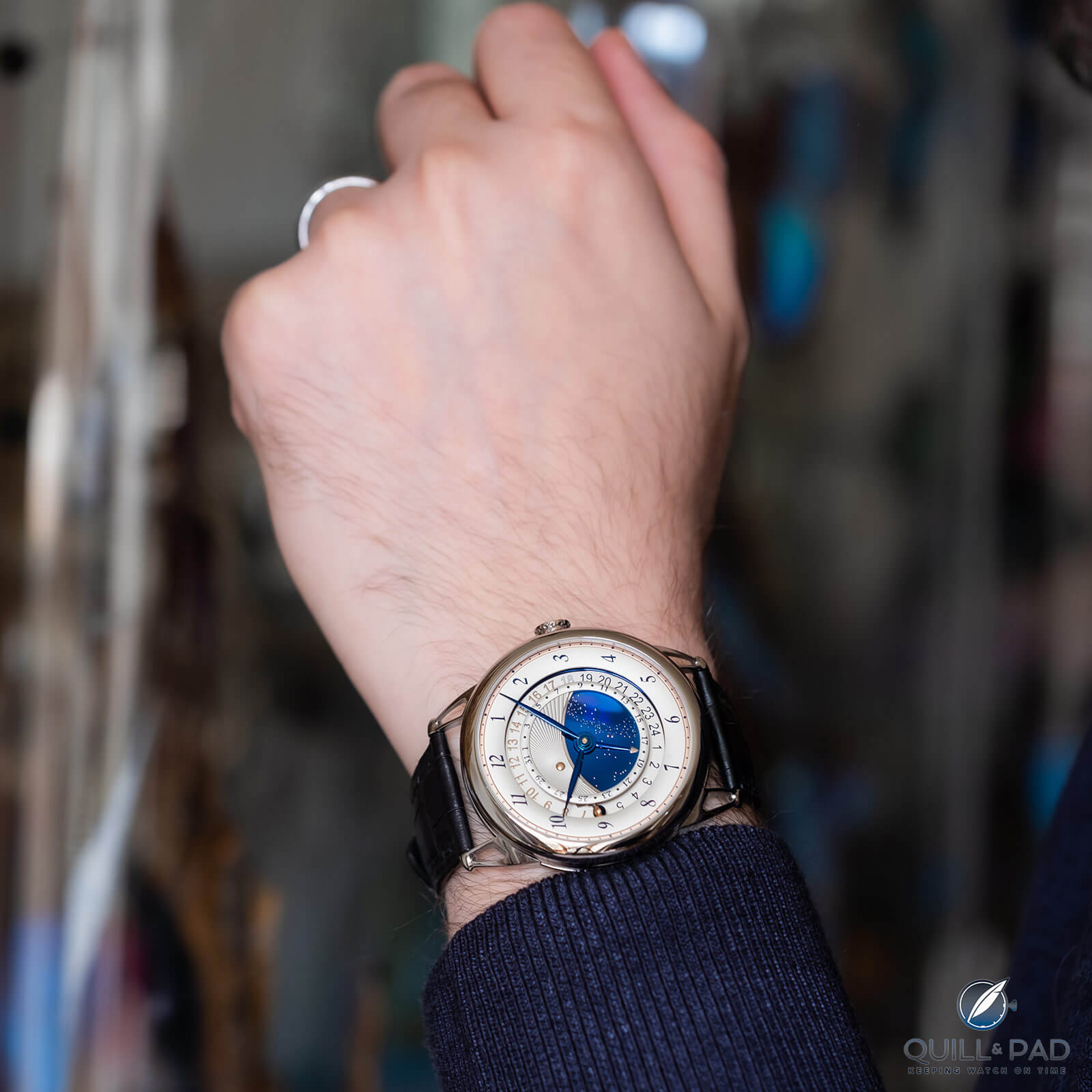
De Bethune DB25 GMT Starry Varius on the wrist
As the world starts coming alive again, watches like the GMT Starry Varius are bound to inspire fans of De Bethune to get out and see the world. Just don’t forget to take a minute to look up.
While I plan my next trip (and a way to get the GMT Starry Varius on my wrist for it) let’s take it and break it down!
- Wowza Factor * 9.8 De Bethune always ranks highly for wow factor, and when you add in the Starry Varius dials and all these features, it is nearing the peak!
- Late Night Lust Appeal * 98» 961.052m/s2 The entire point of the GMT Starry Varius is to keep you up at night gazing at the stars, so it’s no surprise that this has a lot of lust appeal keeping me dreaming about the watch itself!
- M.G.R. * 66 De Bethune makes some of the coolest movements, which are both out of this world and entirely classically inspired, resulting in some breathtaking mechanics. This is no different and is a strong showing for a geeky movement!
- Added-Functionitis * Moderate Second time zone, day/night indication, and a date are enough to make a watch fairly complicated, even if it wasn’t a De Bethune. That adds a lot of zest, but with three extra features I would recommend the regular-strength Gotta-HAVE-That cream just make sure you have an ample supply for all that time you’ll be spending traveling!
- Ouch Outline * 12.8 Slicing your hand on the nylon leash of a sprinting dog! Fishermen know not to grab a rope that is rapidly being pulled out lest they lose all the flesh on their hands. I learned the lesson in a minor way when I instinctively tried to grab the leash of a dog sprinting at another dog, only to have it slide through my fingers and remove more skin than I imagined it could. I’ll be nursing this wound, and my pride, for a while but I honestly would do it all over again if it meant getting the GMT Starry Varius on my wrist!
- Mermaid Moment * It’s always you . . . Milky Way! The Starry Varius editions from De Bethune have always been some of my favorites, and adding this to the World Traveller to change the vibe hooked me from the start. Now I just need to call around to find a suitable location for the reception!
- Awesome Total * 869.4 Start with the caliber number (2507) and divide by the days of power reserve (5), then add the number of components in the caliber (368) to get an equally stunning awesome total!
For more information, please visit debethune.ch/en/collections/db25-collections/gmt-starry-varius.
Quick Facts De Bethune DB25 GMT Starry Varius
Case: 42 x 11.8 mm, titanium
Movement: manually wound Caliber DB2507, 5 days power reserve, 28,800 vph/4 Hz frequency with aerodynamic titanium balance, flat terminal curve balance spring, and silicon escape wheel
Functions: hours, minutes; second time zone, date, day/night indication
Price: CHF 95,000
You may also enjoy:
Displaying World Time “Mysteriously” : The De Bethune DB25 World Traveller
De Bethune DB28XP Meteorite: To Boldly Go Where No Watch Has Gone Before





















































Leave a Reply
Want to join the discussion?Feel free to contribute!